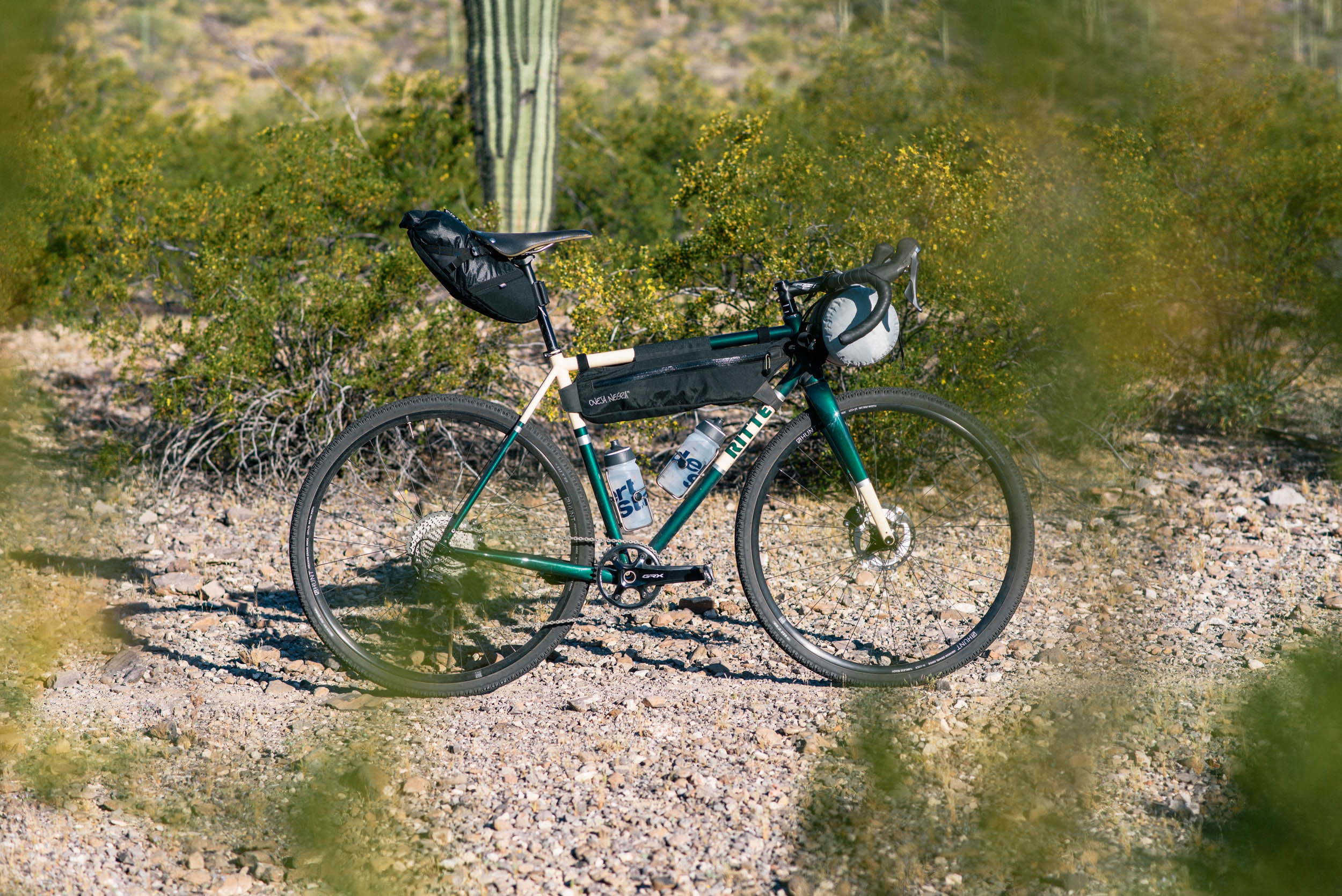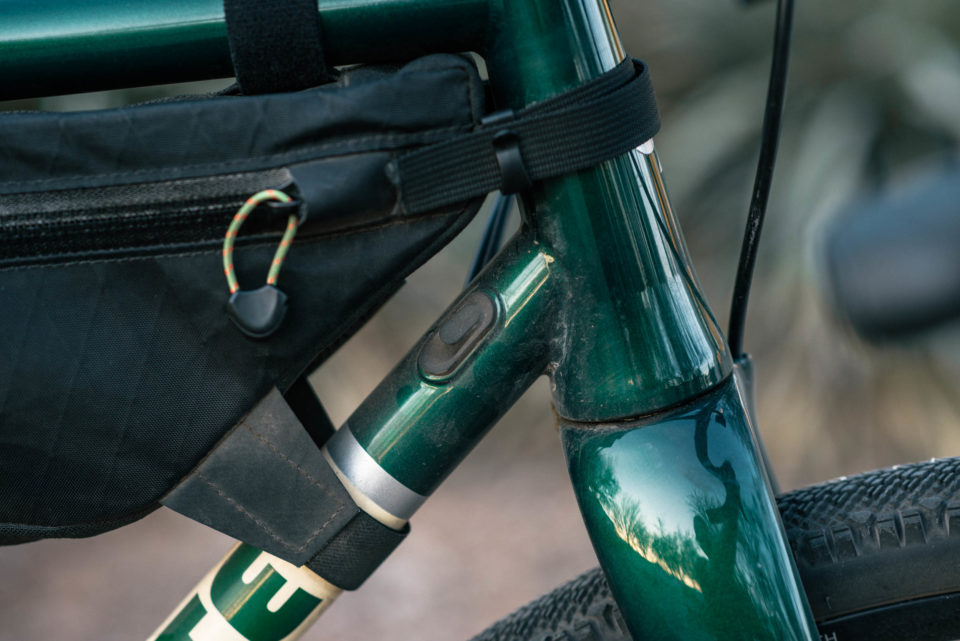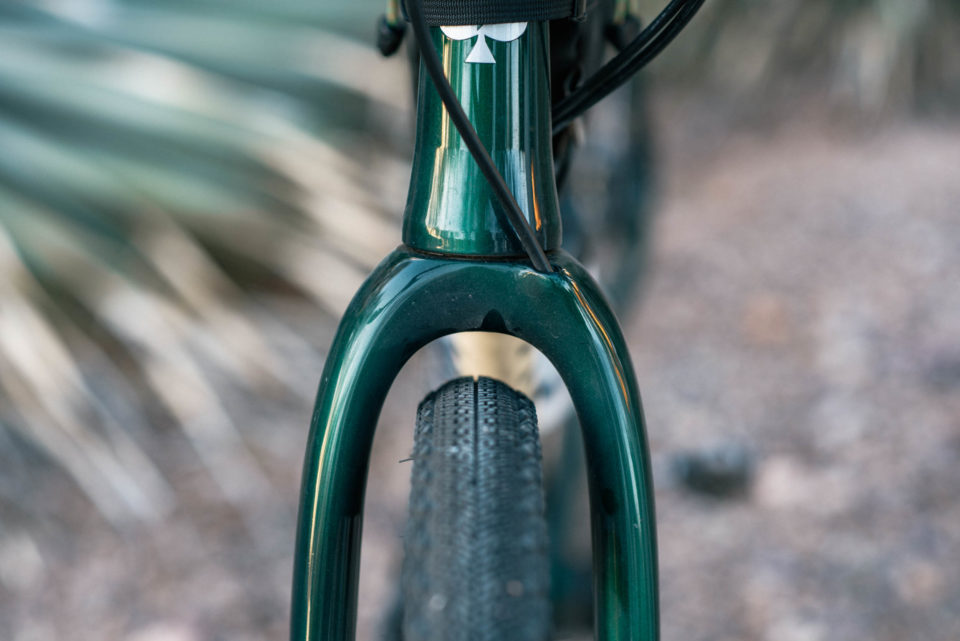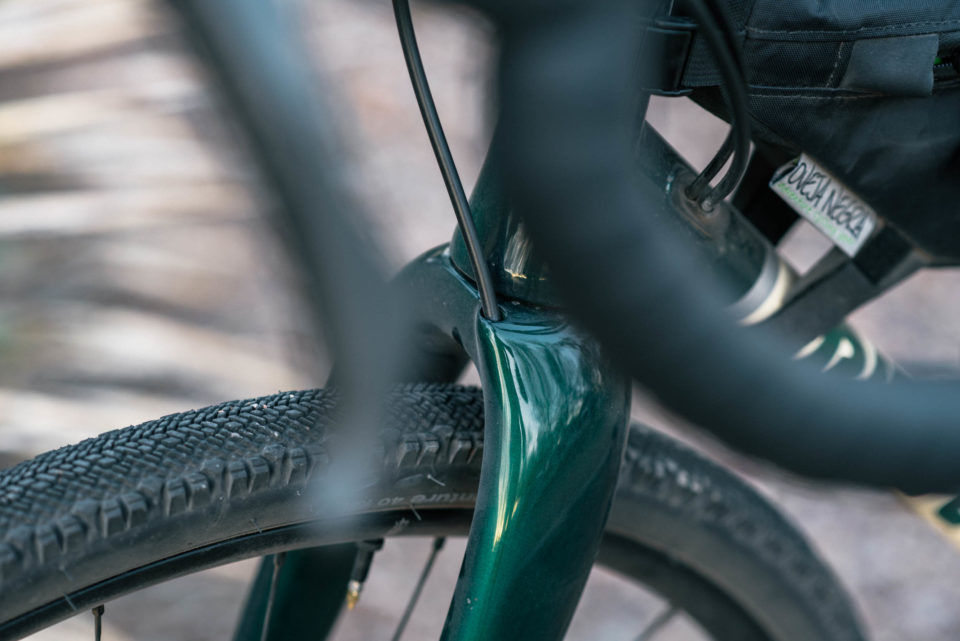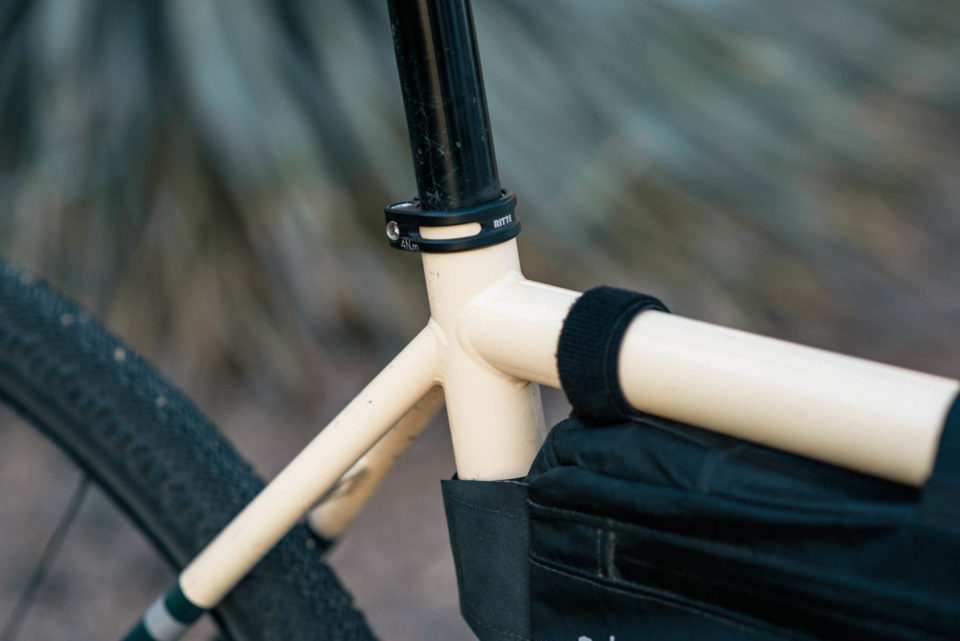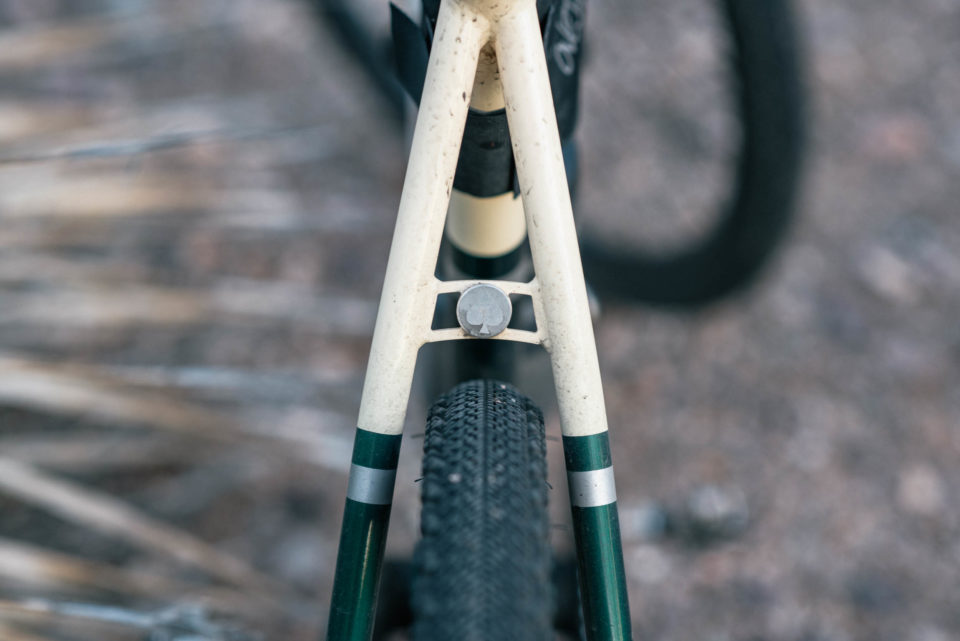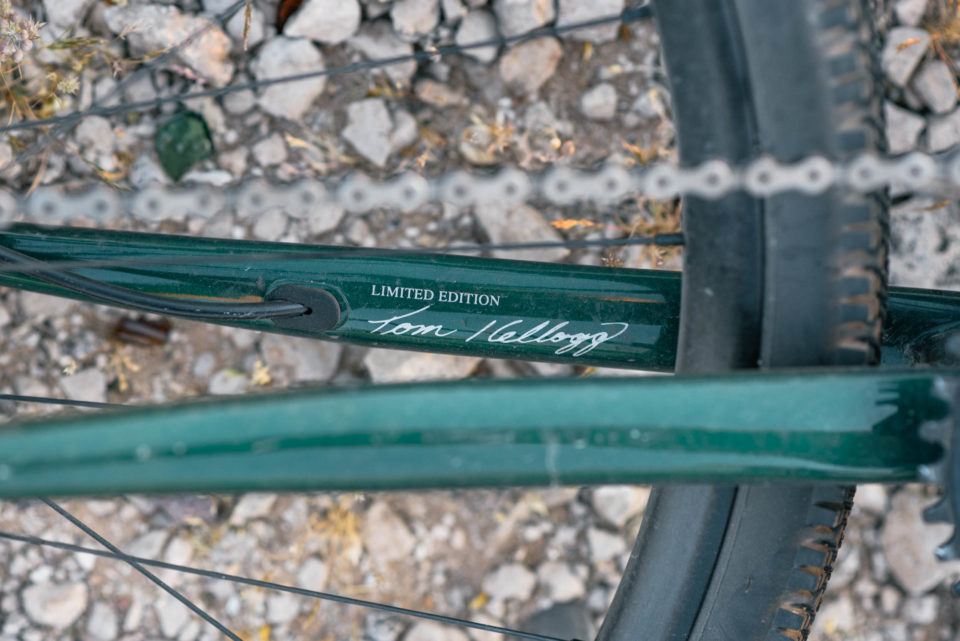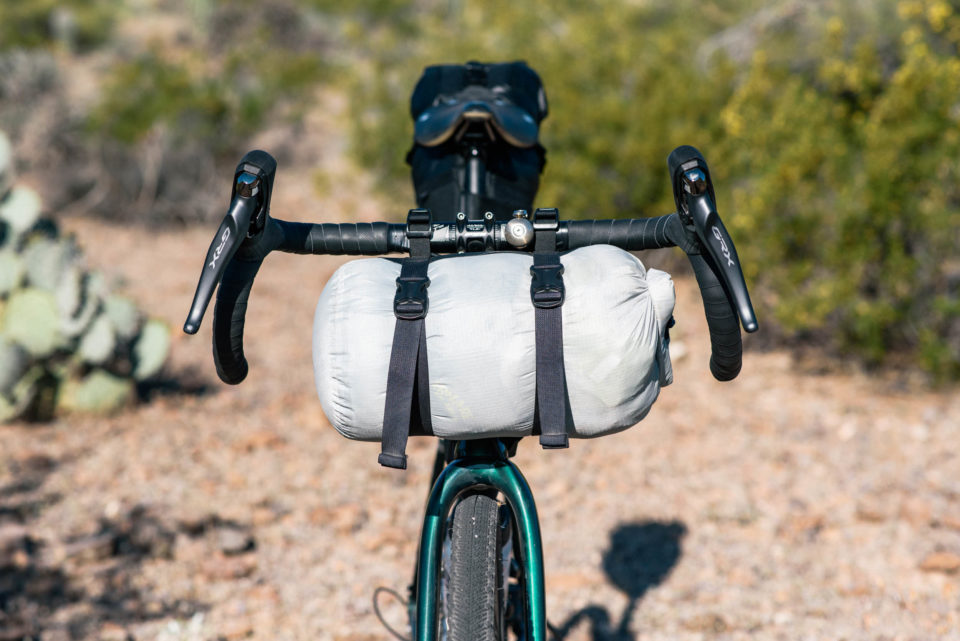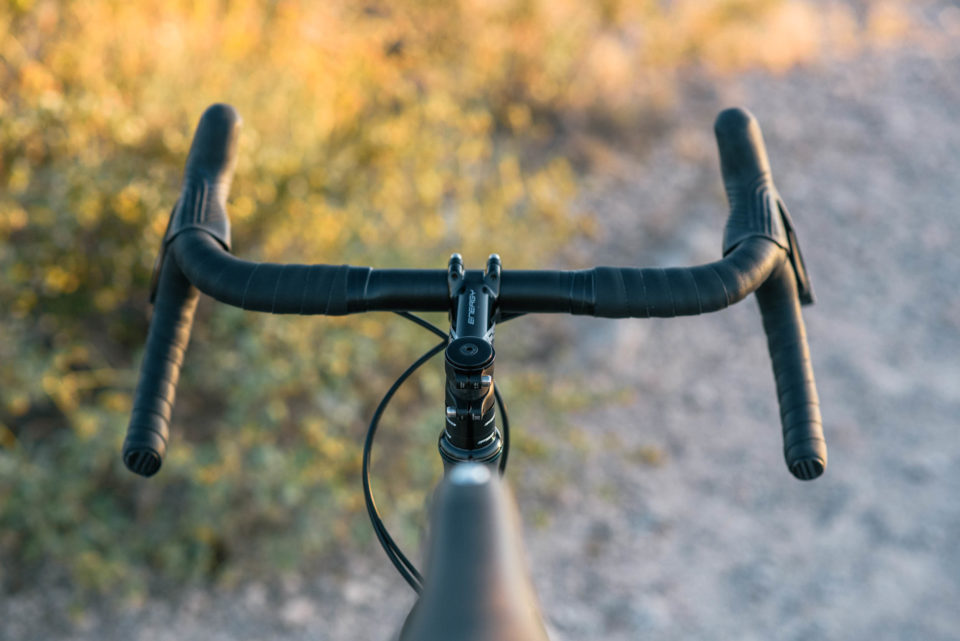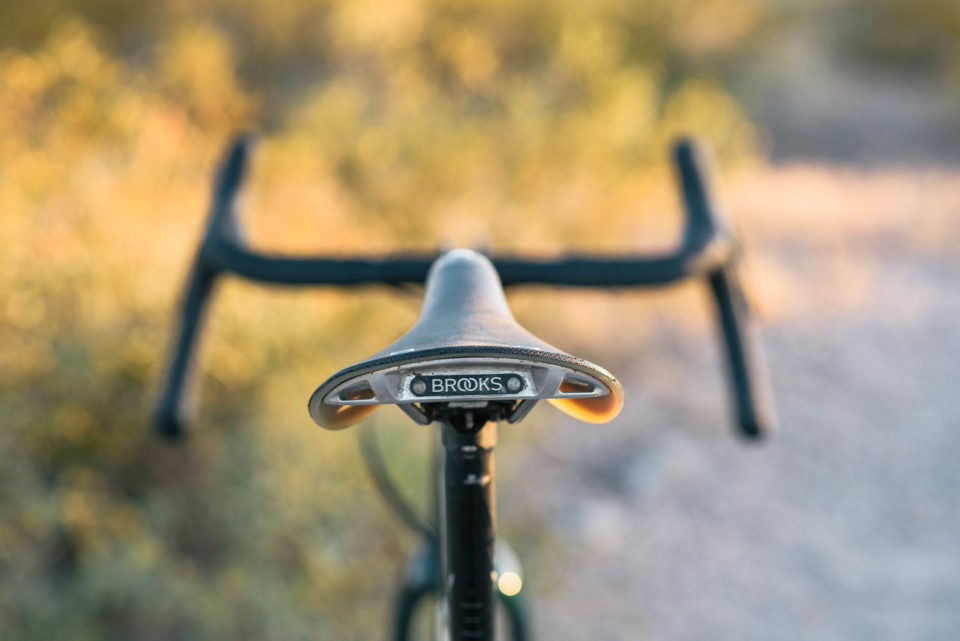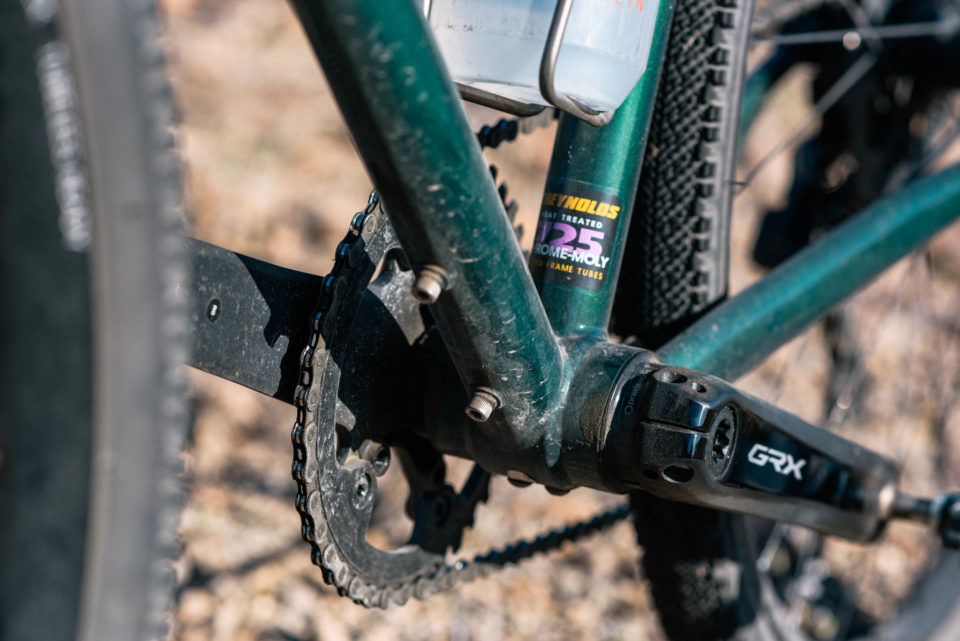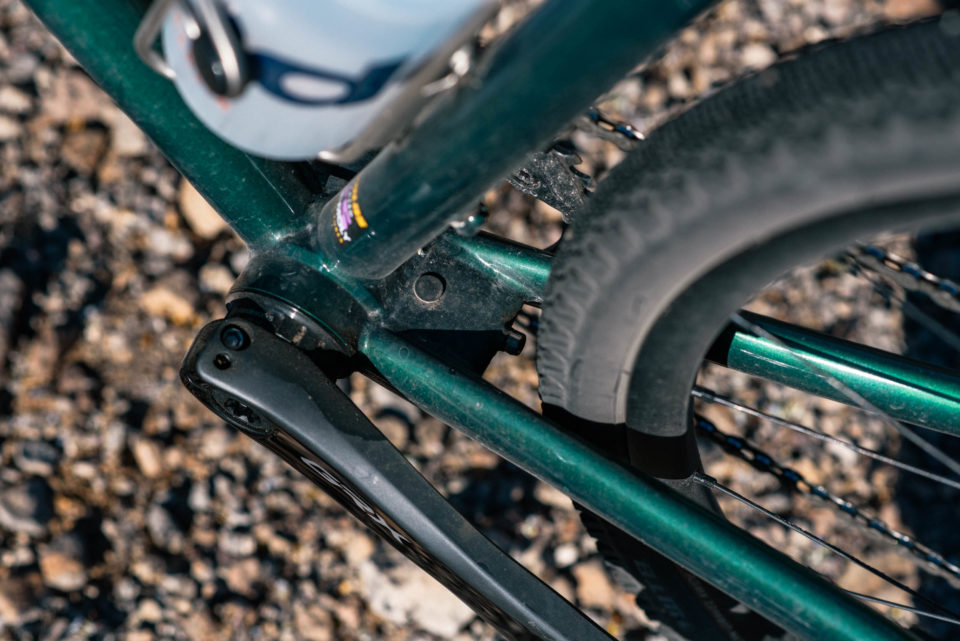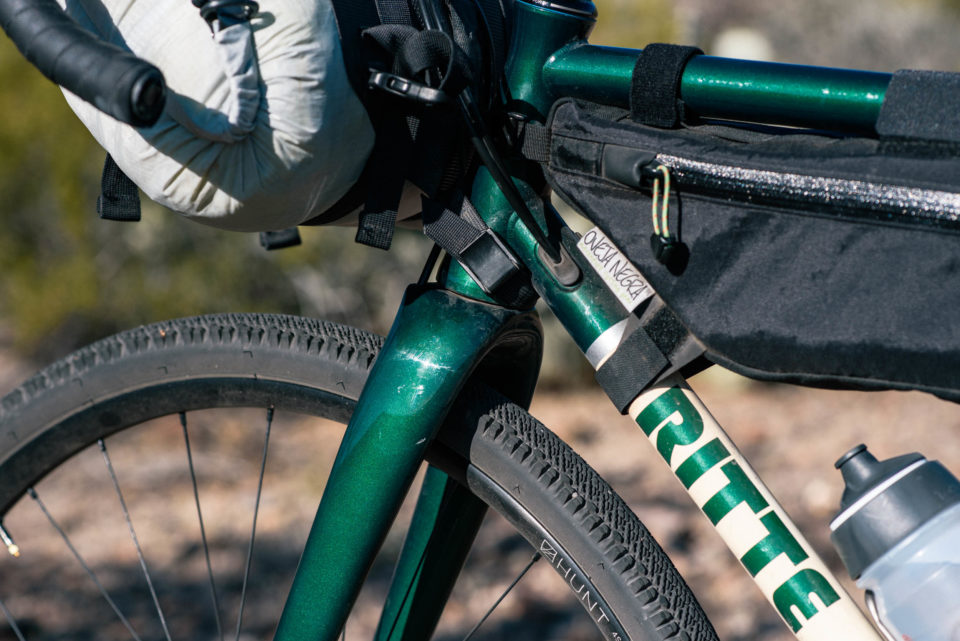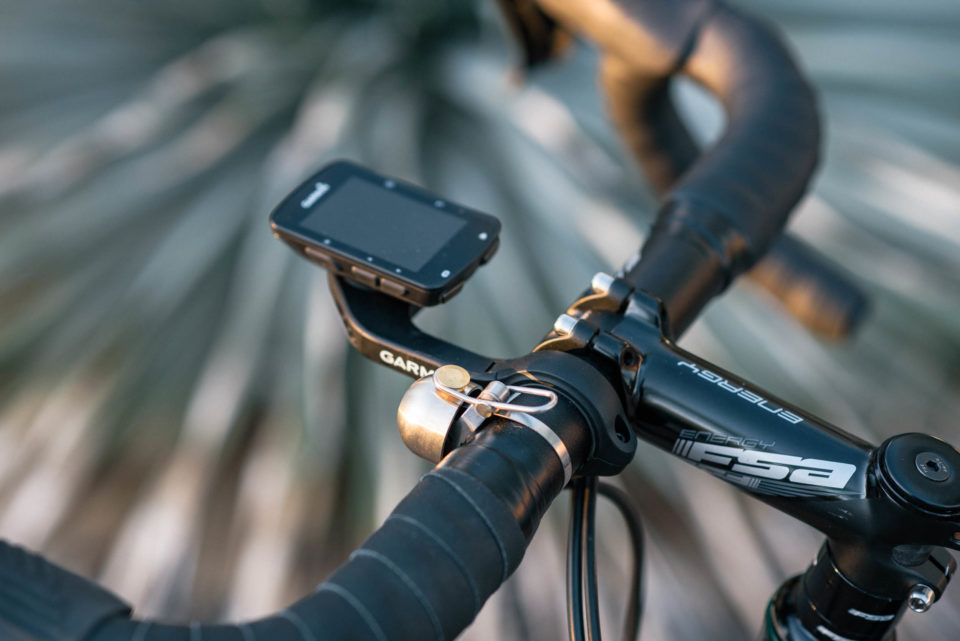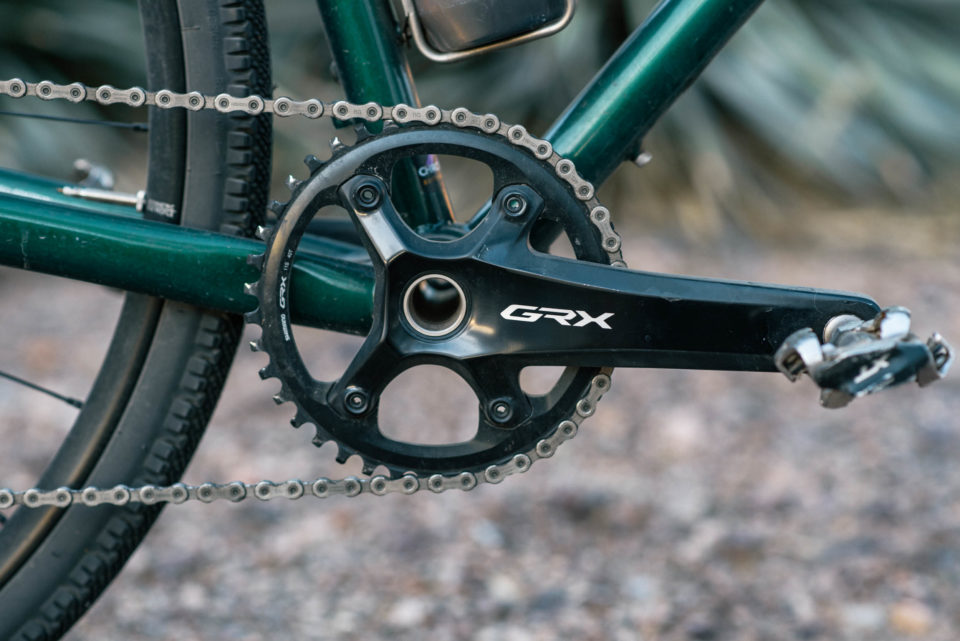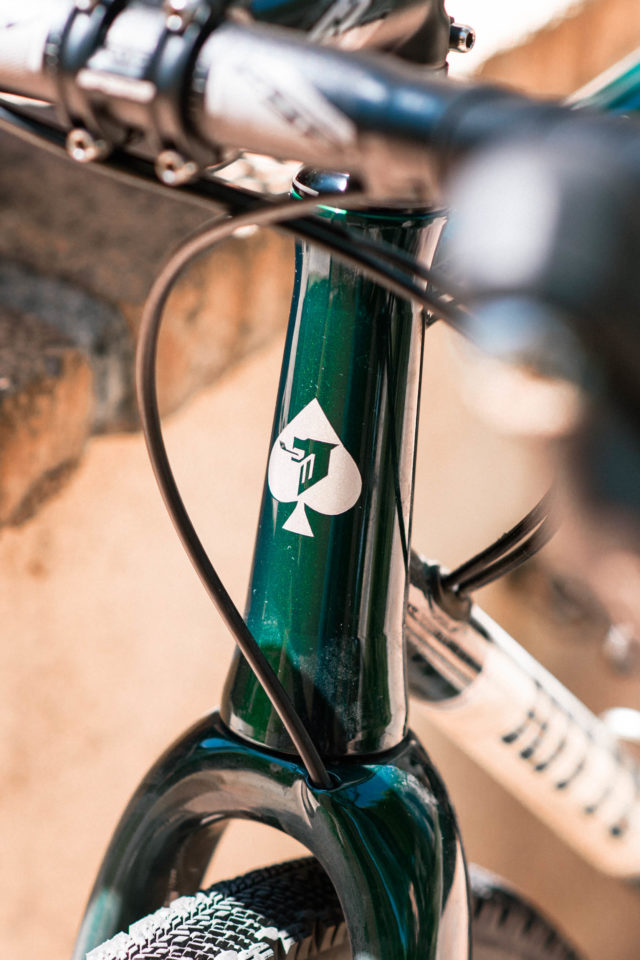Ritte Satyr Steel Gravel Bike: First Ride Review
Share This
Breaking away from their road bike heritage, Ritte released a pair of interesting gravel/all-road bikes over the winter, including the Satyr, which sports a T47 bottom bracket, triple bottle mounts, larger tire clearance, and more. After a few weeks of riding one around the Sonoran Desert, Lucas shares his initial impressions in this first look…
Announced in December of last year, the Ritte Satyr is one of two new models—the other being the Phantom all-roader—that kicked off a refresh of the brand and helped push them beyond the realm of high-performance road bikes they’ve been focused on since launching in 2009. To help bring the brand out of a recent period of hibernation, they enlisted expert framebuilder Tom Kellogg, who’d freshly closed the doors of his own company, Spectrum Cycles, and brought his more than 40 years of framebuilding experience to the design table.
The Satyr caught my eye when it came out last year, and I was able to arrange a demo bike for a few weeks to put together this first look. While I don’t intend for this to be a comprehensive review, I’ll introduce the bike and provide some initial impressions from the time I spent riding it.
Ritte Satyr Overview
Although it’s sold as an off-the-shelf frameset, the sum of the Ritte Satyr’s parts makes it more than just another production frame and fork. Designer Tom Kellogg chose a custom specced Reynolds 725 tubeset to create a specific profile for each of the Satyr’s six sizes (XS-XXL), all with a unique diameter, wall thickness, and butting profile to match their corresponding tube lengths and rider sizes.
At 6’3” tall, I’ve ridden a few bikes that felt, to me, like they were just oversized versions of a smaller, more carefully considered bike that presumably rode much better. My experience with the Satyr was a world apart from that. All the thought Tom Kellogg and the folks at Ritte gave to size-specific head angles, varying fork rakes, and custom tubing profiles come together to give the Satyr its dialed ride feel. Plus, its high-quality Reynolds steel tubes offer a supremely comfortable ride, the handling is great, and riding it reminded me that fast is fun.
- Highlights (XL/58cm)
- Angles: 73 Headtube, 72.5° Seattube
- Rear Center: 435mm
- Reach/Stack: 392mm/592mm
- Bottom Bracket: T47
- Hub specs (f/r): 12 x 100mm, 12 x 142mm
- Seatpost Diameter: 27.2mm
- Max Tire Size: 700c x 43mm
Here’s what Tom had to say on the subject of riding a fully custom vs. meticulously designed production frame: “Well I’ve been asked many times over the years, how many people really need a custom frame, and you know, not a lot. People who really need a custom frame? 10%. Those who benefit from a custom frame, eh 30%. Okay? But, this is actually a little bit different, because some of what people benefit from a custom frame isn’t so much the fit, it’s just the way it rides and Ritte is filling in a good chunk of that ‘could benefit from custom’ percentage with these bikes.”
While I think this is an interesting perspective from a renowned builder who’s been in the industry for ages, it’s also safe to assume that most folks who can afford to shell out the $2,250 the Satyr commands would likely want something tailored to their measurements. And a frameset at that price point is attainable from at least some of the many skilled framebuilders out there, using the same materials, though it wouldn’t be a Kellogg—a point worth noting as he’s been at it longer than most folks in the business. To be sure, Tom has amassed quite a legion of fans over the years, and for good reason.
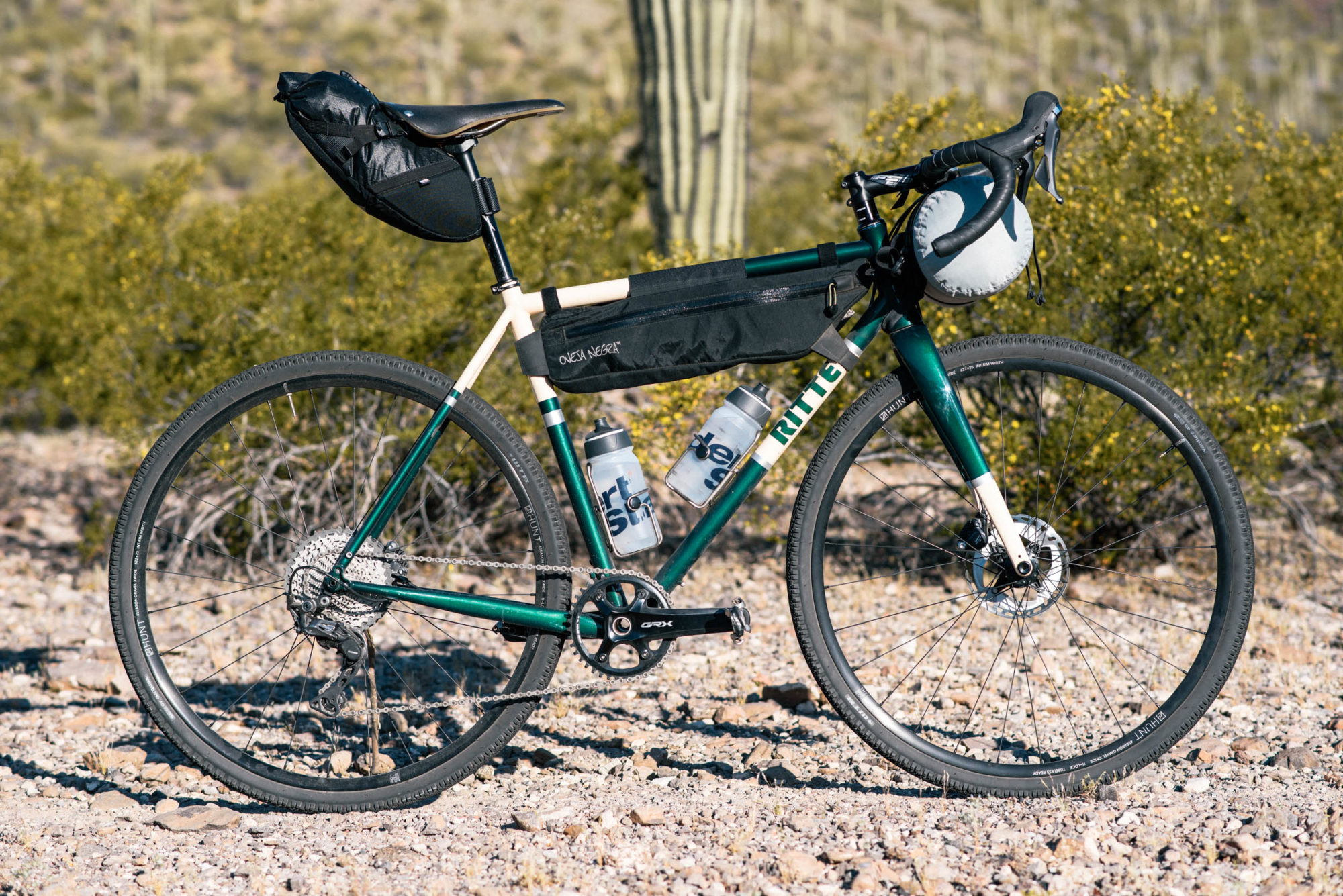
Ride Impressions
I spent a few weeks pedaling the Ritte Satyr in the area around my current home base in Tucson, Arizona, where there’s a wealth of great riding opportunities. From paved climbs up Mt. Lemmon and Gates Pass, to the vast network of gravel roads surrounding the city, to the nearby Sky Islands Odyssey route, the area offers a little bit of everything for testing a bike that’s touted to be capable of handling any road. While I had the Satyr, I mostly stuck to unloaded day rides from my front door, but I also made it out on some quick overnighters, and a couple times threw the bike on the back of my car for rides a bit further afield in the beautiful Sonoran Desert.
Steel has long been my preferred frame material—an opinion you’ll find echoed by others around the site—so it’s no surprise that the Reynolds 725 tubeset felt great. It strikes the right balance of stiff and forgiving that I’ve grown to appreciate in a high-quality steel frame paired with a carbon fork such as the ENVE G Series Gravel Fork specced here. I’ve been making an honest effort to embrace carbon and aluminum frames in recent years, but a few weeks on the Satyr was all the reminder I needed that steel’s ride quality is unmatched, at least for my liking.

If I’d gotten around to it, I would have swapped the 110mm/6° stem it came with for something a tad shorter as getting my hands perfectly situated on the brake hoods made me feel a hair too stretched out, but there’s little else I’d change about the stock GRX 800 build. The FSA Adventure handlebars are only 440mm wide, which is narrower than what I’d spec if it were up to me, but it’s not an entirely surprising choice from a company known for its road bikes. That said, I’ve yet to jump on board the ultra wide flared handlebar trend, and tend to think 460/480mm bars are adequately wide (and would be slightly better suited to this particular bike). I also switched out the stock Fabric Scoop saddle for my trusty Brooks Cambium C17, not because I don’t think the Scoop is a perfectly nice saddle, but because the Cambium C17 earns my pick for most comfortable saddle ever.
These days, I’m mostly riding 650B bikes, so I’d almost forgotten about the annoyance of toe overlap. With my size EU 47 / US 13 shoes clipped in at a comfortable position, I had a fairly significant amount of toe overlap. Some people don’t mind it, but I’ll admit to finding toe overlap more irritating than I probably should, especially as it’s not much of an issue once you’re at speed. It’s nothing you can’t learn to live with, and it’s in no way unique to the Satyr, but is worth a quick mention. Depending on your frame size, shoe size, and cleat positioning, it may not be an issue for you.
Satyr as a Bikepacking Rig
Though I think the Satyr likely makes the most sense as a gravel racing or all-roading rig, a number of the design decisions that went into it look pretty good through a bikepacking lens. The third bottle mount under the downtube is a small touch that adds a lot of utility and is something that should be a given on all bikes in this category by now. The frame also has a T47 bottom bracket, a standard we appreciate here for its versatility and simplicity. As for the internal cable routing, it’s well executed (particularly though the bottom bracket) and adds nicely to the bike’s sleek look, but I prefer the straightforwardness of fully external cable routing, especially on a bike I’d consider taking out for an extended bikepacking trip. The Satyr has hidden mounts for fenders, too, which gives it a tick in the versatility column, but I really can’t imagine putting fenders on this thing. There are no rack mounts, and I think that’s just fine.
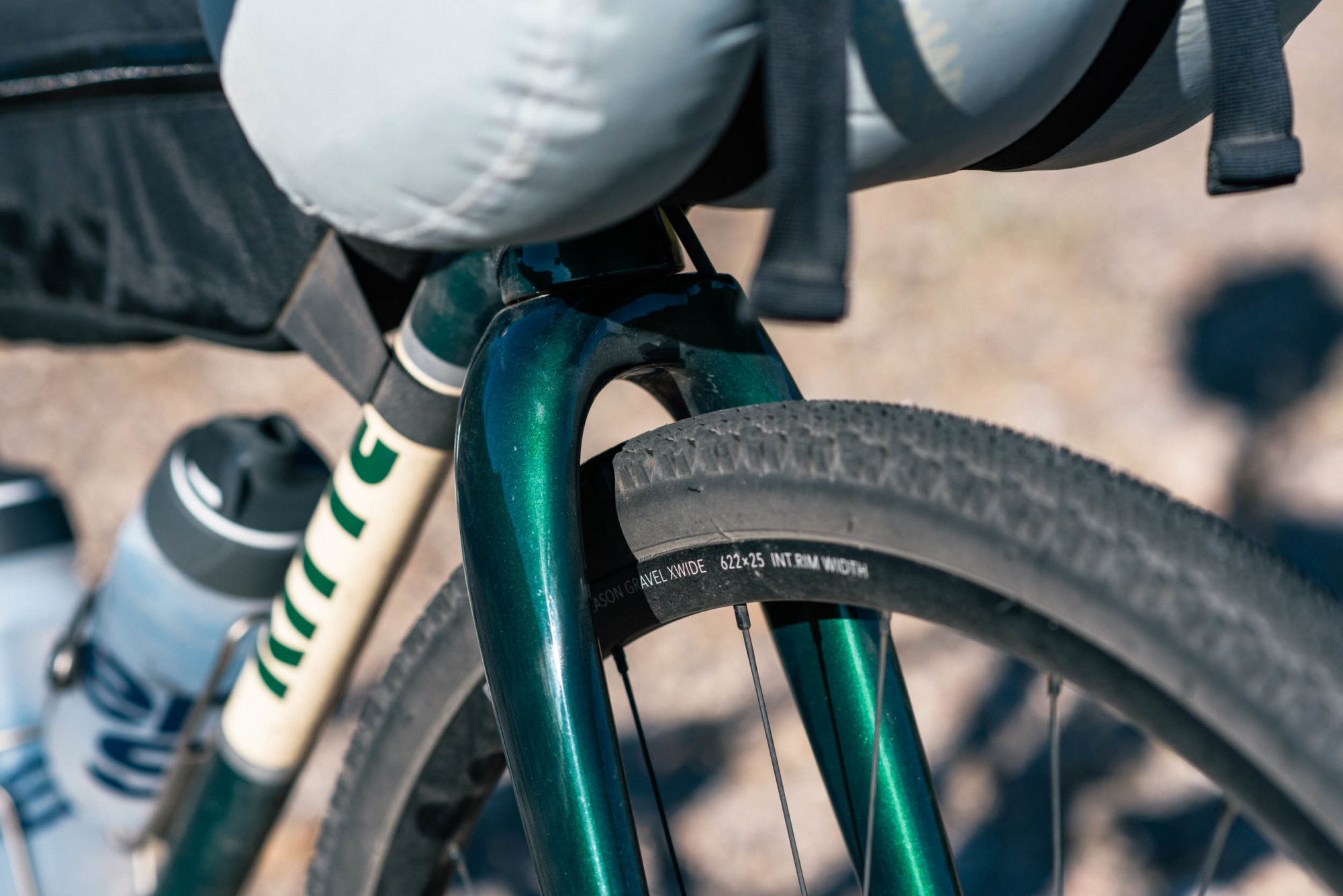
According to the specs provided by Ritte, the Satyr will clear a 700 x 43mm tire, which isn’t exceedingly generous by today’s standards, but is ample for the type of riding they envisioned folks getting into when they dreamed up this bike. That said, I was running 40mm WTB Ventures and they didn’t leave much space in the rear stays, so the Satyr’s 700 x 43mm tire clearance may be slightly overstated, depending on your rim and tire combination. Ideally, it’d clear something just a little wider, but I was pleasantly surprised by how good it felt to roll on 40mm tires—the narrowest I can recall riding in at least a few years, and still plenty confident on the rougher stuff.
Loaded up with a few bags for fast-and-light overnighters, the Satyr was unwaveringly comfortable and stable while bouncing along rutted dirt roads. Although it wouldn’t be my pick for more involved, heavily loaded bikepacking trips, I’d very happily ride it for a gravel race or endurance bikepacking event with a lighter load. Ritte doesn’t use the term bikepacking in any of their marketing language around the Satyr, but if you’re just looking to toss on a few frame bags and get out there, it’s more than ready for that.
Ritte Satyr Specs
I’ve mostly covered the notable frame specs above, but here they are at a glance:
- Reynolds 725 tubing
- ENVE carbon fork
- T47 bottom bracket
- Full internal cable routing
- Flat mount disc brakes
- 43 mm tire clearance
- Triple cage mounts
- Fender mounts
Unfortunately, due to all of the bike shops in the area being closed because of COVID-19, I wasn’t able to get a weight for the complete build. I’ll see if I can get an official weight from Ritte and will update this section if so.
Pricing, Builds, and Availability
The Satyr is available in six sizes, from XS up to XXL, suited for riders from 5’0” to 6’3” and taller. You can purchase it as a frameset only for $2,250, or in one of three complete builds: GRX 600 for $3,800; GRX 800 for $4,600 (as tested); or SRAM Force/Eagle eTap for $7,750. If one of those three options doesn’t suit your needs, the team at Ritte will also gladly work with you to design a custom complete build of your own. I’ve seen custom paint mentioned as an option, too, but don’t know what kind of additional cost that would incur. And rather than speccing them for you, Ritte lets you choose your gearing, crank length, stem length, and bar width on all complete builds, which means you won’t have to start swapping things out the moment your bike arrives.
At the time of publishing, it appears the Satyr is still available in every size except XS. I suspect they didn’t do a massive production run of these, so I’d recommend getting in touch with Ritte to check on stock in your size if you’re giving some thought to buying a frameset.
- Size/model tested Ritte Satyr (XL/58cm)
- Price (as tested) ~$4,600
- Place of manufacture Taiwan
- Manufacturer’s Details Ritte.cc
Ritte Satyr GRX 800 Build Kit
- FRAME Ritte Satyr
- FORK ENVE Gravel
- REAR DERAILLEUR Shimano GRX RD-RX812
- SHIFTERS Shimano GRX RX810
- CASSETTE Shimano XT CS-M8000, 11-42T
- CHAIN Shimano HG-X11
- BB Praxis Works T47
- HEADSET Cane Creek 40
- TIRES WTB Venture 700 x 40mm
- WHEELSET Hunt 4Season Gravel Disc X-Wide, 28 Spokes
- ROTORS Shimano XT, 160mm
- BRAKES Shimano GRX BR-RX810
- CRANKSET Shimano GRX FC-RX810(175mm)
- CHAINRING Shimano GRX, 40T
- PEDALS Shimano XT
- HANDLEBAR FSA Adventure, 44cm
- STEM FSA Energy, 110mm
- SADDLE Brooks Cambium C17
- SEATPOST FSA Afterburner, 27.2mm
Wrap Up
By adopting several popular all-road standards and pulling in veteran framebuilder Tom Kellogg to oversee the design process, Ritte created a very impressive gravel bike in the Satyr. As mentioned earlier, the $2,250 price for the frameset is the kicker. It’s hardly an unreasonable amount of money to spend on a high-end frame and fork these days, but your options are wide open at that price point. And if your interest in this style of bike is more casual, there are a number of compelling complete bikes for that amount. You’ll also likely be able to find a framebuilder in your home country who could create something fully custom for you in the same ballpark, but almost definitely not one with 40+ years of design experience or who has made nearly as many frames as the master craftspeople who fabricate these in Taiwan (side note: on the subject of building bikes in Taiwan, this piece is well worth a read).
If you can comfortably afford it and want a Kellogg-designed frame, I’m confident you won’t have any regrets about buying a Satyr. However, there are a lot of fantastic bikes in the the all-road/gravel category that’ll deliver a great ride for less money, and I wouldn’t feel right not pointing out that $4,600 (for the Satyr as tested) isn’t the price of entry for an excellent gravel bike that’ll serve you well for years to come.
I commend Ritte for going all in by relaunching their road-oriented brand with the Satyr and Phantom, and I look forward to seeing what the next step down this path looks like for them. I really enjoyed my time with the Satyr, and riding it even rekindled my interest in having a fast, lightweight bike of my own for meandering rides down here in the desert. We focus a lot on bikes that can fit ever-bigger tires and have as many mounts as possible on the site, and this isn’t one of them, but riding it offered a welcome reminder that flying along dirt roads and up and down mountains, unburdened, is pretty damn fun, too.
Find additional details or purchase a Satyr of your own at Ritte.cc.
Please keep the conversation civil, constructive, and inclusive, or your comment will be removed.






